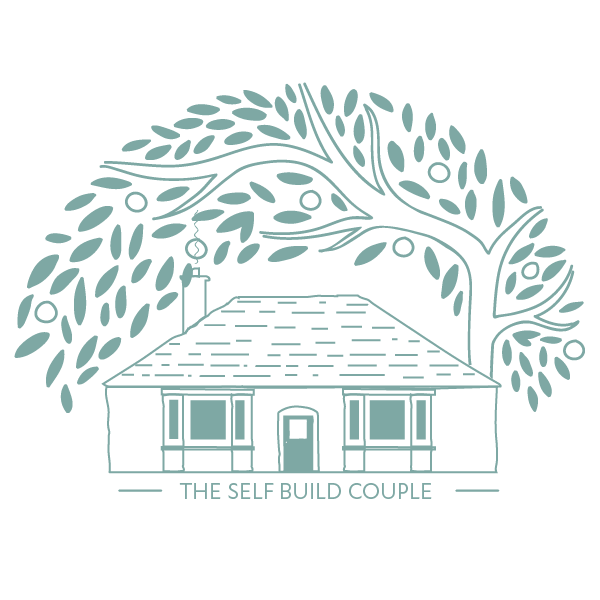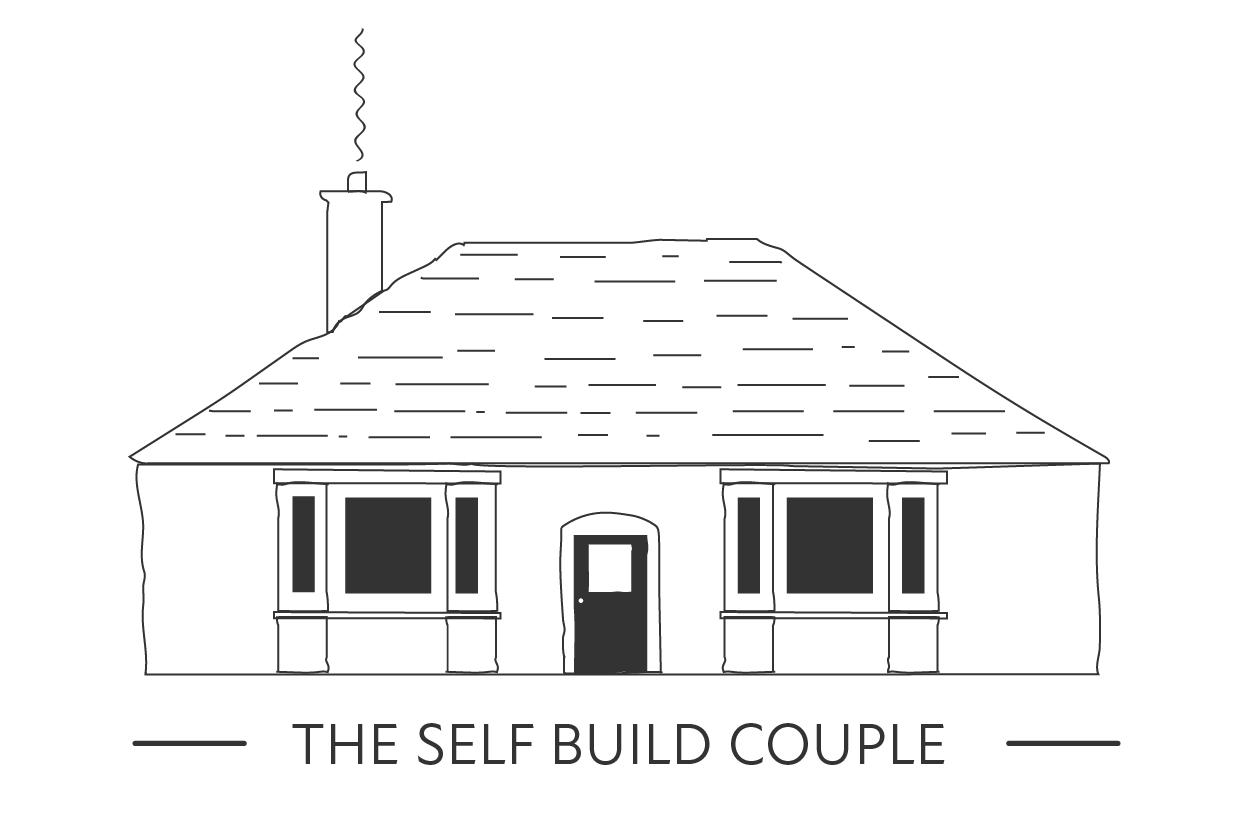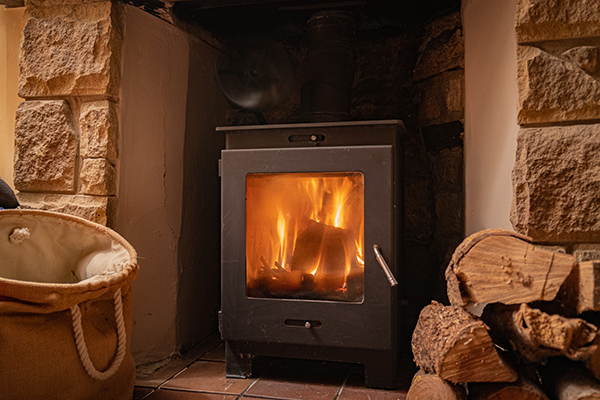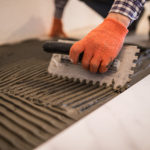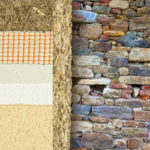When you buy an old stone house, there are a lot of decisions to make. One of the most important is what type of heating system should be installed.
Heat is one of the most critical concerns in our modern lives. There are many solutions for heating your house.
The solution that you choose depends on factors such as money, available space and materials at hand.
In this article we will look at some of the ways to heat a stone house and also ways to prevent your heat from escaping your house.
If you want your home to be energy efficient then you should also consider investing in other forms of renewable energy like solar panels or ground source heating pumps (geothermal).
Don’t forget about fireplaces too! They will create a nice ambience for any room and give off some much-needed heat.
Before diving into the solutions of how to heat your home first we must look at the reason why your stone house is so cold.
Are stone houses hard to heat?
A lot of people think that because an old stone home has thick walls it’s naturally insulated from heat loss- this is not true.
The only way to keep a house warm in winter is with adequate insulation, such as double or triple glazed windows and breathable insulation.
There are a lot of factors that come into the fact that a stone house is hard to heat.
Drafts
The first reason your old house might be hard to heat is because of drafts.
Quite a common thing in Ireland drafts are almost always found in homes no matter how well we think we have sealed them.
More than likely you have bought an old stone house.
With old houses come many problems. These include old window sills, Door frames, chimneys, attic doors or anywhere where cables etc are coming through a wall or ceiling.
All of these contribute greatly to heat loss, so it’s worth checking to see if there are any ways of wind or cold air getting through.
To check the house properly you can get a professional to check using a blower door test.
Windows & Doors
Old windows and doors are more often than not are due to an upgrade.
Research shows that with the right windows and doors, energy loss from windows can be less than 3% of total home heating costs.
It is important to choose proper windows and glazing when replacing your windows.
Most of the windows in old houses are just a single glazed window with a rotten timber frame.
These are will let cold in and let heat out.
*Just be careful when removing windows and doors. Some of these old buildings used no lentils and just had the wall held up by the timber frame of the door or window. Just something to keep in mind when you are taking out the old ones.
Floors
A lot of old floors in old houses are a mix of suspended wooden floors and concrete or lime floor.
The concrete or lime was typically poured directly onto the earth and is not very deep.
These can be quite cold and surprisingly will let out an awful lot of heat. See diagram.
Attic / Ceiling
Most likely there is no insulation in your ceiling or attic space.
If it’s a two-storey check between the rafters.
If it’s a bungalow check the ceiling.
Adding attic insulation is a quick, cheap and effective way to instantly add some insulation to your home.
The Stone
While many people think that stone is a good insulator it isn’t.
It does hold onto the heat for a while but then releases it. It does the same process with moisture also in the air.
All of these typically make it difficult to heat a stone house.
But with a few tweaks, you can have the cosy stone house that you always dreamed of.
Insulation
The Wrap / External Insualtion
One way to insulate your home which has become extremely popular lately is to wrap your home.
Think of this like wrapping your home up in a warm blanket.
This is not an option however if you want to keep some of that beautiful stonework on show.
This method is also extremely expensive but here in Ireland, you can receive a grant for this.
Click here to read more about this.
Wall Insualtion
Before you start slabbing up your insulation first be conscious of the stone.
Stone is natural and needs to breathe. So with that being said, you can’t just insulate your walls with just any old insulation.
If you put your insulated slab straight onto a stone wall you will come into awful problems.
What will happen is it will sweat and moisture will build up behind the insulation.
This can spell disaster.
The insulation needs to breathe.
I have an article here where I go through 11 types of insulation for a stone house and also go into more detail about why you need breathable insulation. Check it out.
However, walls are just one area of the house you need to insulate in order to achieve a warmer house.
Have a look at this diagram below.
35% of your overall heat will leave through your walls.
There are other ways of keeping your home warm if you want to leave the stone the way it is.
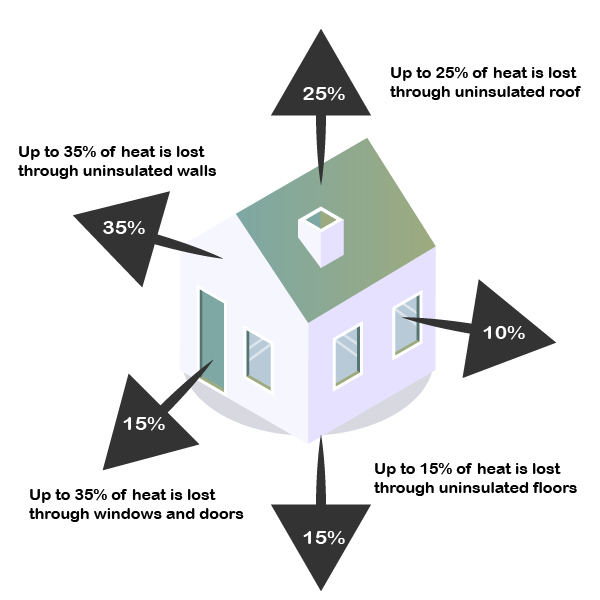
Attic Insulation
Attic insulation is a cost-effective, quick and easy way to insulate your stone house without affecting the stone.
Sheep wool, Hemp wool, Rockwool and earth wool are all easy to install rollout insulation.
Hemp wool and Sheep wool are obviously the more eco-friendly option but are most costly than your standard Rockwool or Earthwool insulation.
Floor Insulation
Floor insulation can come in the form of insulation boards or insulating gravel used in Limecrete floors.
The idea of Limecrete is that it is a breathable material like your stone walls and in using it makes your house passive and avoids trapping moisture.
Insulating gravel is made from recycled foam glass.
It acts with your underfloor heating as the insulation.
This type of flooring system is recommended for older stone houses although it does depend on where you are located and the condition of your home.
Underfloor Heating / Radiators
Underfloor heating and radiators are a great way to heat up the home.
What works well with Old Stone houses are having a low temperature that is constant.
Underfloor heating, in particular, can spread that heat evenly across the room giving constant low heat to the stone which will keep it dry.
Underfloor heating is an extra cost if you opt for that over your traditional radiators but in cases like this, it can be well worth the investment.
Heat Pumps
Heat pumps such as Air to Water have blown up in recent years in Ireland and across the UK.
Heat pumps are another way to heat with geothermal energy.
A pump outside your home takes in cold air and drives heat out of it, thus heating your home.
Heat pumps function similarly to refrigerators except that fridges compress gas while heat pumps heat air.
Heat pumps are relatively cheap, very efficient and do not consume fuel during operation. They run on electricity.
However, they work best when the home is sealed airtight which in our case was difficult with the stone house and self-build.
While it is possible we felt to airtight our own home was more challenging to do so we opted out of using Air to Water.
However, if done right Air to Water can be extremely effective and reduce your bills to a fraction of what they would be otherwise.
Windows and Doors
If your doors and windows are modernized then it will cut down on heat lost by up to 35%.
Just having double glazed or triple glazed installed can increase your rating and keep heat in your home for longer.
Make sure that when the new windows and doors are installed that they are sealed well and don’t invite any drafts in.
Fire ????
For centuries, people have been using fireplaces to heat their homes.
While there is no ‘problem’ with this per se there are a few small setbacks.
The fireplace needs to be constantly tended to in order for it to work properly.
The bigger issue is that this leads to a sudden burst of heat for a couple of hours which isn’t what is best for the stone.
What not to do in a house is to have one big fire that is supposed to head up the whole house.
If you notice long ago they would have many fireplaces in the house and your stone house, depending on the size would have more than one.
My stone house in fact had 4 fireplaces.
The idea of this was to give each room its own heat source but the fireplaces were small for small rooms and bigger size for the bigger rooms.
While I mentioned above it is not a great idea to have a sudden burst of heat to your stone home that’s what most people did back then and often still do.
Research has found that the stone reacts better with a low constant temperature. It conducts the heat better keeping your home warmer for longer.
With all this info in mind, we decided to have two fireplaces in the house for when you need that extra bit of heat that you won’t get with radiators or underfloor heating.
We put one in the living/sitting room and one in the kitchen/dining area.
The one in the sitting room was a gas fireplace.
We chose this for a number of reasons.
Cleaner. Didn’t need to bring in turf or wood to the sitting room. Good control over the heat
Looks. You can get some amazing gas fires. One in particular that we always wanted has been a log burning effect in a glass case. Something like the image below.
If you however decide against insulating your beautiful stone walls and opt-in to keep the traditional fireplace or use a stove I would suggest a wood burner over turf or other fossil fuels.
If you aren’t insulating your walls just make sure you are using the other steps to make sure your home is not losing heat.
Conclusion
Now that you know the ins and outs of heating a stone house, it’s time to get started.
Investing in the right insulation, windows and doors, heating system, is key.
But before doing that determining where your heat is being lost is just as important.
Take another look at the diagram above and determine what will make the most impact on your home and where you want to spend your money.
All of this will save you big time on your energy costs and keep you cosy during those cold winter months.
We hope this blog post has been helpful.
Check out our other blog posts here for more information about how much of an impact these factors have on keeping your stone house heated throughout the seasons!
Now go heat up that stone home!
